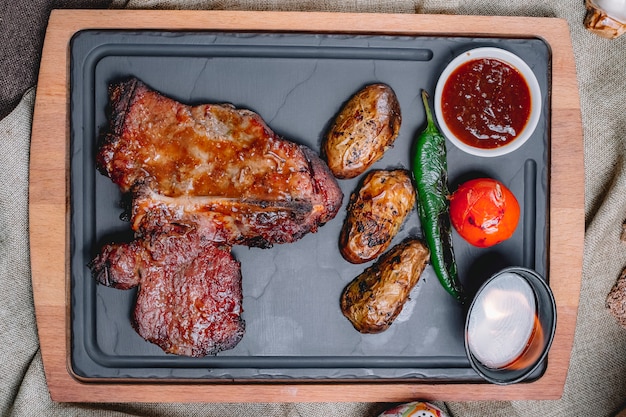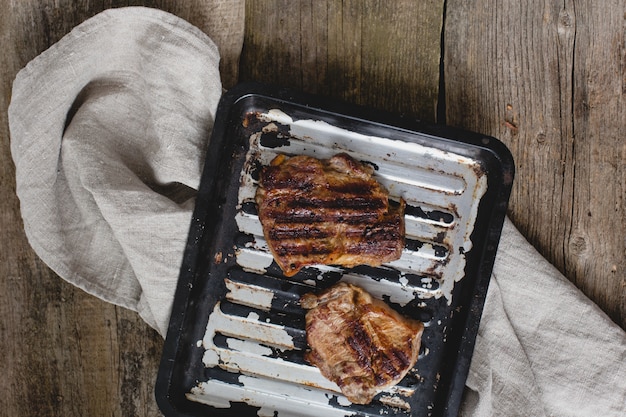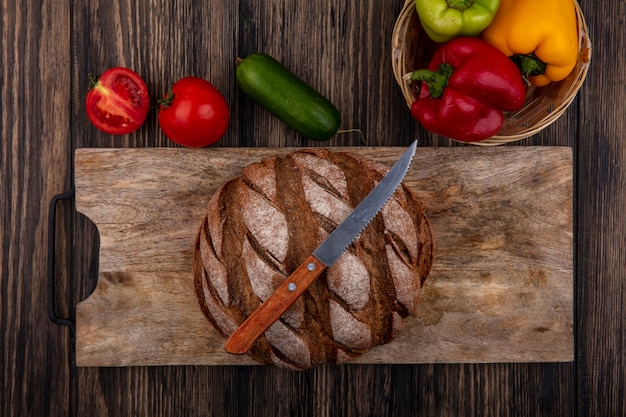Ah, rib roast. The mere mention sends shivers of anticipation down my spine! A majestic cut of meat, perfect for special occasions, family gatherings, or even a cozy Sunday dinner. But, like any culinary adventure, mastering the art of rib roast cooking requires a bit of knowledge and finesse. You want that gorgeous, perfectly cooked roast, bursting with flavor and tenderness, not a dry, disappointing hunk. So, grab a cuppa, settle in, and let's dive into the world of rib roast together!
Part 1: Understanding Your Cut, the Foundation of Success

Before we even think about turning on the oven, we need to get acquainted with our star ingredient. Rib roasts come in various shapes and sizes, each with its own unique characteristics. choosing the right cut is crucial for both the final outcome and the cooking time.
Choosing the Right Cut, a Culinary Compass
prime rib: This is the classic, the one that conjures up images of grand feasts and celebrations. Typically cut from the 3rd to the 7th rib, it boasts a generous amount of marbling, which translates to rich, delicious flavor.
standing rib roast: Now, this is a statement piece! This majestic cut includes the entire rib section, usually from the 6th to the 12th rib, complete with the bone. It's a showstopper, perfect for a large gathering.
Baby back ribs: A more modest and affordable option, ideal for a smaller gathering or a casual weeknight meal. These ribs come from the lower rib section and can be cooked in a similar way to a full rib roast, yielding a tender and flavorful result.
Size Matters, a Key to Timing
The size of your rib roast is directly proportional to the cooking time. A small prime rib will be ready in a flash compared to a large standing rib roast. Always check the weight of your cut before embarking on your cooking journey. For example, a 3-4 pound prime rib will need significantly less time than a 10-12 pound standing rib roast.
Part 2: The Art of Resting, a Crucial Step

Here's a crucial piece of advice, learned through years of trial and error: resting your rib roast after cooking is absolutely essential. It's oh so tempting to carve into that beautiful, golden-brown roast right away, but trust me, resisting that urge will be rewarded with a spectacularly juicy and flavorful result.
Why Resting Matters, Unveiling Juicy Secrets
When a rib roast is cooked, the internal juices tend to migrate towards the surface. If you carve into it immediately, those precious juices will escape, leaving you with a dry and disappointing roast. Letting it rest allows the juices to redistribute evenly throughout the meat, ensuring tenderness and maximizing the flavor.
How Long to Rest, Patience is Key
Plan to rest your rib roast for at least 15-20 minutes before carving. For larger roasts, consider resting it for up to 30 minutes. Cover it loosely with aluminum foil to trap in the heat and moisture during the resting period.
Part 3: The Magic of the Thermometer, Your Culinary Guide

Let's face it, poking the meat, trying to guess if it's done... it's a bit of a gamble, isn't it? However, there's a simple way to banish the guesswork and achieve consistent results: a meat thermometer. It's an indispensable tool for any serious cook, and absolutely crucial for rib roast cooking.
Why a Thermometer is Essential, Taking the Guesswork Out
A meat thermometer takes the stress out of cooking. It provides an accurate reading of the internal temperature, allowing you to know exactly when your roast is cooked to your desired level of doneness. No more dry, overcooked roasts!
Doneness Levels, Finding Your Perfect Taste
Rare: 125-130°F - A touch of pink in the center, with a delicate texture.
Medium-Rare: 130-135°F - Slightly more cooked than rare, still juicy and flavorful.
Medium: 140-145°F - A balance of pink and brown, with a slightly firmer texture.
Medium-Well: 150-155°F - Mostly cooked through, with a touch of pink remaining.
Well Done: 160°F and above - Fully cooked, with a brown interior.
Part 4: Cooking Methods, Unlocking a World of Flavor
Rib roast is a culinary chameleon, adaptable to various cooking methods. You can roast it in the oven, grill it to perfection, or even slow-cook it for melt-in-your-mouth tenderness. Each method offers unique flavor profiles and textures, so it's about choosing the method that best suits your preferences and the occasion.
oven roasting: The Classic, Tried and True
This is the most common and reliable method for cooking rib roast. It's simple to execute and consistently delivers delicious results.
Tips for Oven Roasting, Mastering the Technique
Preheat your oven to 450°F. This initial high heat helps create a flavorful crust.
Season your roast generously with salt and pepper. Don't be shy!
Place your roast on a roasting rack in a baking pan. This allows for even airflow and prevents the roast from steaming in its own juices.
Roast for 15 minutes per pound. This gives the roast a good head start.
Reduce the heat to 325°F and continue cooking until your desired doneness is reached, using your trusty thermometer to guide you.
Grilling: For a Smoky Flavour, A Summertime Delight
Grilling a rib roast adds a touch of smoky goodness, making it perfect for summer barbecues.
Tips for Grilling, Embracing the Outdoor Flavors
Make sure your grill is hot! This will help create a nice sear on the roast.
Season your roast liberally with salt and pepper, and maybe even add a touch of your favorite grilling rub.
Place your roast on the grill and cook for 10-15 minutes per side, turning it once to ensure even cooking.
Reduce the heat to medium-low and continue cooking until your desired doneness is reached, using your trusty thermometer to guide you.
slow cooking: For Tenderness, a Relaxing Approach
Slow cooking is a fantastic option for achieving an incredibly tender and juicy rib roast. It's perfect for those busy weeknights when you want a delicious meal without spending hours in the kitchen.
Tips for Slow Cooking, Effortless Elegance
Season your roast with salt and pepper, and feel free to add a touch of your favorite herbs and spices.
Place the roast in your slow cooker and cook on low for 8-10 hours. The slow, gentle cooking process will break down the tough connective tissues, resulting in tender, succulent meat.
For a complete meal, add vegetables such as onions, carrots, and potatoes to the slow cooker. They'll simmer in the juices and absorb the flavors.
Part 5: The Art of Seasoning, Elevating Flavors
Seasoning is a crucial element in transforming a simple rib roast into a culinary masterpiece. While a classic salt and pepper rub works wonders, don't be afraid to explore a world of flavor by experimenting with different herbs and spices.
Basic Seasoning, the Building Blocks of Flavor
Salt: This essential ingredient enhances the natural flavors of the meat, bringing out its full potential.
Black Pepper: A touch of heat and depth, complementing the savory notes of the rib roast.
Herbs and Spices, Unleashing Flavor Profiles
Rosemary: This fragrant herb pairs beautifully with beef, adding a warm, earthy aroma.
Garlic Powder: A subtle, savory flavor that enhances the richness of the meat.
Paprika: Adds a touch of sweetness and a vibrant red hue to the roast.
Onion Powder: A subtle, oniony flavor that complements the other seasonings.
Dried Thyme: An earthy, slightly peppery flavor that adds depth and complexity.
Part 6: The Perfect Glaze, A Final Touch of Brilliance
A glaze is the finishing touch, adding a final burst of flavor and a glistening sheen to your rib roast. There's a glaze for every taste, but here are a few of my personal favorites.
Simple Glaze:
Honey: This classic glaze adds a touch of sweetness and a subtle sticky texture.
Dijon Mustard: A tangy glaze that adds a burst of acidity and complexity.
Hearty Glaze:
Brown Sugar: Creates a rich, caramelized flavor and a beautiful glaze.
Worcestershire Sauce: A savory, umami-rich glaze that adds a touch of complexity.
Part 7: Accompanying Sides, A Symphony of Flavors
Now, let's talk sides! A rib roast deserves a selection of equally delicious accompaniments to create a complete and satisfying meal.
Traditional Sides, Classics for a Reason
Roasted Potatoes: A classic side that perfectly complements the richness of the rib roast.
mashed potatoes: Creamy, comforting, and the perfect canvas for a dollop of gravy.
green beans: A fresh and healthy side that adds a touch of brightness to the meal.
Yorkshire Pudding: A traditional British side, light and fluffy, offering a delicious contrast to the richness of the roast.
Gravy: A rich and savory sauce that elevates the entire meal, adding a touch of decadence.
Alternative Sides, Exploring New Frontiers
roasted brussels sprouts: A delicious and healthy alternative to traditional sides. Roast them with a bit of olive oil, salt, and pepper, and maybe even a sprinkle of balsamic vinegar for added depth.
Asparagus: Fresh, springy, and bursting with flavor. Roast or grill them to perfection and enjoy their delicate sweetness.
sweet potato Casserole: A sweet and creamy side that adds a comforting touch to the meal. Top it with toasted pecans or marshmallows for added richness.
Part 8: Rib Roast Cooking Time Table, Your Guide to Perfection
Now, let's get to the nitty-gritty details. Here's a table with approximate cooking times for different rib roast weights and doneness levels. Remember, these are just guidelines, and the actual cooking time may vary depending on your oven or grill.
| Weight (lbs) | Rare (125-130°F) | Medium-Rare (130-135°F) | Medium (140-145°F) | Medium-Well (150-155°F) | Well Done (160°F and above) |
|---|---|---|---|---|---|
| 3-4 | 1 hour 30 minutes - 1 hour 45 minutes | 1 hour 45 minutes - 2 hours | 2 hours - 2 hours 15 minutes | 2 hours 15 minutes - 2 hours 30 minutes | 2 hours 30 minutes - 2 hours 45 minutes |
| 5-6 | 2 hours - 2 hours 15 minutes | 2 hours 15 minutes - 2 hours 30 minutes | 2 hours 30 minutes - 2 hours 45 minutes | 2 hours 45 minutes - 3 hours | 3 hours - 3 hours 15 minutes |
| 7-8 | 2 hours 30 minutes - 2 hours 45 minutes | 2 hours 45 minutes - 3 hours | 3 hours - 3 hours 15 minutes | 3 hours 15 minutes - 3 hours 30 minutes | 3 hours 30 minutes - 3 hours 45 minutes |
| 9-10 | 3 hours - 3 hours 15 minutes | 3 hours 15 minutes - 3 hours 30 minutes | 3 hours 30 minutes - 3 hours 45 minutes | 3 hours 45 minutes - 4 hours | 4 hours - 4 hours 15 minutes |
| 11-12 | 3 hours 30 minutes - 3 hours 45 minutes | 3 hours 45 minutes - 4 hours | 4 hours - 4 hours 15 minutes | 4 hours 15 minutes - 4 hours 30 minutes | 4 hours 30 minutes - 4 hours 45 minutes |
Part 9: FAQs, Addressing Common Questions
Now, let's address those common questions that pop up when embarking on a rib roast journey.
1. Can I cook a rib roast from frozen?
It's generally not recommended to cook a rib roast from frozen. It will take considerably longer to cook, and the meat may not be cooked evenly. It's best to thaw it completely in the refrigerator for at least 24 hours before cooking.
2. What's the best way to check for doneness?
The most accurate method is to use a meat thermometer. Insert it into the thickest part of the roast, making sure it doesn't touch the bone. The thermometer should be inserted to the center of the meat, not just the surface.
3. What if my roast is overcooked?
Don't despair! If your rib roast is overcooked, it might be a bit dry, but it's still edible. Try slicing it thinly and serving it with a rich sauce, such as a gravy or a pan sauce made from the drippings.
4. Can I freeze a cooked rib roast?
Yes, you can freeze a cooked rib roast. Wrap it tightly in plastic wrap and aluminum foil and store it in the freezer for up to 3 months. Reheat it gently in the oven or in a slow cooker before serving.
5. How can I make my rib roast more tender?
There are several tricks up our culinary sleeves. You can try slow cooking it, allowing for longer, gentler cooking that breaks down tough tissues. Marinating the roast overnight can also help tenderize it. Another option is to use a meat tenderizer, which breaks down the muscle fibers, leading to a more tender result.
And there you have it! With this comprehensive guide, you're well-equipped to conquer any rib roast challenge. Remember, the key is to choose the right cut, cook it carefully, and rest it properly. Happy cooking, and enjoy the succulent results!
Everyone is watching

Corn on the Cob: The Ultimate Guide to Perfectly Cooked Ears
Healthy MealsAh, corn on the cob. Just the name evokes images of sunny days, barbecues, and that sweet, juicy flavour that ...

Scallops: The Ultimate Guide to Perfect Cooking
Healthy MealsAh, scallops. Those delicate, sweet, and utterly delicious morsels of the sea. They hold a special place in my...

Spaghetti Squash: The Ultimate Guide to Cooking and Serving
Healthy MealsRemember that time you saw spaghetti squash at the supermarket, looking all bumpy and strange, and thought, "W...

Salmon Cooking Times: Perfect Guide for Every Recipe
Healthy MealsLet me tell you, cooking salmon is an art form. It's all about getting that perfect balance: juicy and tender,...

Ham Cooking Time: How Long to Bake, Smoke, or Boil a Delicious Ham
Healthy MealsAh, ham. It's a classic, isn't it? A real crowd-pleaser, especially around holidays. And when done right, it'...
